Are you a college student struggling to balance your academic responsibilities with cooking healthy meals on a limited budget? Look no further! Introducing student meal prep, the ultimate solution to simplify your college life. With these easy and budget-friendly recipes, you can finally say goodbye to late-night pizza deliveries and instant noodles.
Imagine having delicious, homemade meals ready to go whenever hunger strikes, without breaking the bank or spending hours in the kitchen. From quick breakfast options to satisfying lunches and dinners, we’ve got you covered. Discover the secrets to efficient meal planning, smart grocery shopping, and time-saving cooking techniques that will revolutionize the way you eat as a student.
Whether you’re a beginner in the kitchen or a seasoned chef, our collection of recipes will inspire you to create tasty and nourishing meals that will fuel your body and mind. Get ready to take control of your college life and simplify your mealtime routine with student meal prep.

Benefits of Student Meal Prep
There are numerous benefits to incorporating student meal prep into your college routine. Firstly, it saves you time. Instead of spending hours each day cooking, you can set aside a few hours on the weekend to prepare your meals for the entire week. This frees up valuable time that can be put towards studying, socializing, or pursuing hobbies and interests. Additionally, meal prep allows you to avoid the stress and decision fatigue that often comes with figuring out what to eat. With meals already prepared and portioned, you can simply grab and go, knowing that you’re making a healthy choice.
Another significant benefit of student meal prep is its cost-effectiveness. Eating out or ordering takeout can quickly drain your bank account, especially as a college student on a tight budget. By cooking your meals at home and buying ingredients in bulk, you can save a significant amount of money. Meal prep also helps reduce food waste since you’re only buying what you need and using up ingredients before they spoil. This not only benefits your wallet but also the environment.
Lastly, student meal prep allows you to take control of your nutrition. When you cook your meals from scratch, you have complete control over the ingredients you use and the portion sizes. This means you can make healthier choices and ensure that you’re getting all the essential nutrients your body needs to thrive. Whether you’re following a specific diet or have dietary restrictions, meal prep gives you the flexibility to tailor your meals to your individual needs. It’s a win-win situation for both your health and your taste buds.
Budget-Friendly Meal Prep Tips
Here are some budget-friendly meal prep tips that will help you maximize your savings while still enjoying delicious and nutritious meals:
1. Plan your meals: Before you hit the grocery store, sit down and plan out your meals for the week. Take into account what ingredients you already have on hand and base your meals around those items. This will help you avoid buying unnecessary ingredients and ensure that you use up everything you buy.
2. Shop smart: Make a list and stick to it. Avoid impulse purchases and try to buy ingredients that are on sale or in season. Look for discounts or coupons that can help you save even more. Consider shopping at local farmers’ markets or discount stores for affordable produce and pantry staples.
3. Buy in bulk: Purchasing ingredients in bulk is often more cost-effective. Look for items like grains, beans, and spices that have a long shelf life and can be used in multiple recipes. Divide larger quantities into smaller portions and store them properly to maintain freshness.
4. Cook in batches: When meal prepping, cook larger quantities of food that can be portioned out and stored for later. This not only saves you time but also allows you to take advantage of bulk discounts. Consider investing in a set of reusable meal prep containers to keep your meals fresh and organized.
5. Get creative with leftovers: Don’t let leftovers go to waste. Instead, repurpose them into new meals. For example, leftover roasted chicken can be transformed into a chicken salad or added to a stir-fry. Be creative and experiment with different flavor combinations to keep your meals exciting.
By following these budget-friendly meal prep tips, you can stretch your dollars further and still enjoy a variety of tasty and nutritious meals throughout the week. Don’t be afraid to get creative and experiment with different ingredients and flavors. Meal prep is all about making your life easier and more enjoyable, so have fun with it!
Healthy and Easy Meal Prep Recipes for College Students
Now that you have the basics covered, let’s dive into some healthy and easy meal prep recipes that are perfect for college students. These recipes are packed with nutrients, easy to make, and can be customized to suit your taste preferences. Whether you’re a meat lover, vegetarian, or vegan, there’s something for everyone. Let’s get cooking!

Breakfast Recipes
1. Overnight Oats: In a mason jar, combine rolled oats, your choice of milk, chia seeds, and a sweetener of your choice. Stir well, cover, and refrigerate overnight. In the morning, top with fresh fruits, nuts, or a dollop of nut butter.
2. Egg Muffins: Whisk together eggs, chopped vegetables (such as bell peppers, spinach, and onions), and shredded cheese. Pour the mixture into a greased muffin tin and bake at 350°F (175°C) for 15-20 minutes or until set. These can be stored in the fridge and reheated in the microwave for a quick breakfast on the go.
3. Chia Seed Pudding Parfait: In a bowl, mix chia seeds with your favorite plant-based milk and a dash of vanilla extract. Allow it to set in the refrigerator for a few hours or overnight. In the morning, layer the chia seed pudding with fresh berries, granola, and a drizzle of honey or maple syrup for added sweetness.
4. Avocado Toast with Poached Egg: Toast a slice of whole-grain bread. Mash half an avocado and spread it over the toast. In a small pot, bring water to a simmer and add a splash of vinegar. Crack an egg into the simmering water and poach until the whites are set but the yolk is still runny. Place the poached egg on top of the avocado toast and sprinkle with salt, pepper, and red pepper flakes for a kick.
5. Banana Walnut Pancakes: In a mixing bowl, combine mashed ripe bananas, whole wheat flour, baking powder, a pinch of salt, and your choice of milk. Stir in chopped walnuts for added crunch. Cook the pancake batter on a griddle until golden brown on both sides. Serve with a drizzle of maple syrup and extra banana slices on top.
6. Veggie Breakfast Burritos: Sautee diced bell peppers, onions, and spinach in a pan until tender. Whisk eggs in a bowl and scramble them with the cooked vegetables. Warm up whole wheat tortillas and fill them with the scrambled eggs and veggies. Add shredded cheese, salsa, and avocado slices before rolling them up into burritos.
7. Greek Yogurt Parfait: In a tall glass or bowl, layer Greek yogurt with honey, fresh mixed berries, and a sprinkle of granola or crushed nuts. Repeat the layers until you reach the top. It’s a refreshing and protein-packed breakfast that’s also great for hot summer mornings.
8. Breakfast Quinoa Bowl: Cook quinoa according to package instructions using water or your preferred milk for added creaminess. Once cooked, mix in a dash of cinnamon and a drizzle of honey. Top with sliced bananas, toasted almonds, and a handful of blueberries for a wholesome and nutritious breakfast.
9. Apple Cinnamon French Toast: Whisk together eggs, milk, ground cinnamon, and a touch of vanilla extract in a shallow dish. Dip thick slices of whole-grain bread into the mixture until fully coated. Cook the soaked bread in a greased skillet until both sides are golden brown. Serve with sliced apples and a sprinkle of powdered sugar.
10. Breakfast Smoothie Bowl: Blend frozen mixed berries, a ripe banana, Greek yogurt, and a splash of your choice of milk until smooth. Pour the smoothie into a bowl and top it with sliced kiwi, fresh berries, shredded coconut, and a handful of granola for added texture.
11. Tomato and Basil Omelette: Whisk eggs in a bowl and season with salt and pepper. Pour the beaten eggs into a heated and greased pan. When the edges start to set, add sliced cherry tomatoes and chopped fresh basil leaves on one half of the omelette. Fold the other half over the filling and cook until the eggs are fully set. Serve with a side of whole-grain toast.
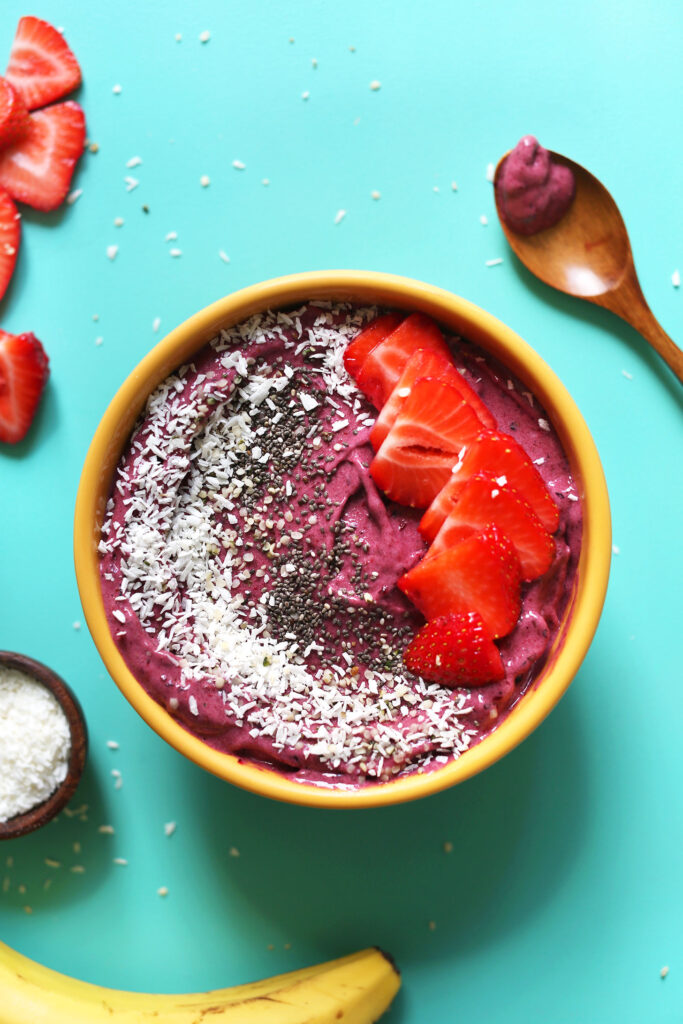

Lunch and Dinner Recipes
1. Chicken Stir-Fry: In a large skillet, sauté chopped chicken breast with garlic, ginger, and your choice of vegetables (such as broccoli, bell peppers, and snap peas). Season with soy sauce, honey, and sesame oil. Serve over cooked rice or noodles.
2. Quinoa Salad: Cook quinoa according to package instructions and let it cool. In a large bowl, combine cooked quinoa with diced cucumber, cherry tomatoes, diced red onion, chopped fresh herbs (such as parsley or cilantro), and crumbled feta cheese. Drizzle with olive oil and lemon juice, and season with salt and pepper.
3. Grilled Vegetable Wrap: Brush slices of zucchini, eggplant, and bell peppers with olive oil and grill them until tender and lightly charred. Spread hummus on a whole wheat tortilla and layer the grilled vegetables, baby spinach, and sliced avocado. Roll up the tortilla into a wrap and enjoy a flavorful and satisfying lunch.
4. Chickpea and Avocado Salad: In a large bowl, mix together cooked chickpeas, diced avocado, cherry tomatoes, diced red onion, and chopped cilantro. Drizzle with a dressing made from lime juice, olive oil, cumin, salt, and pepper. Toss the ingredients together until well combined and serve as a refreshing and protein-packed salad.
5. Caprese Panini: Slice a ciabatta roll in half and spread basil pesto on one side. Layer fresh mozzarella cheese, sliced tomatoes, and fresh basil leaves on the other side. Close the panini and grill it in a panini press or on a stovetop until the cheese is melted and the bread is toasted.
6. Sushi Bowl: Prepare sushi rice according to package instructions and let it cool. Arrange sliced avocado, cucumber, shredded carrots, and imitation crab meat over the rice. Drizzle with soy sauce, pickled ginger, and wasabi for a deconstructed sushi bowl.
7. Baked Lemon Herb Salmon: Place salmon fillets on a baking sheet lined with foil. Mix together melted butter, lemon juice, minced garlic, chopped dill, and thyme. Brush the mixture over the salmon and bake in the oven until the salmon is cooked through and flakes easily with a fork. Serve with roasted asparagus and quinoa on the side.
8. Beef and Broccoli Stir-Fry: Slice beef sirloin into thin strips and marinate in a mixture of soy sauce, minced garlic, and cornstarch. In a hot wok or skillet, stir-fry the beef until browned. Add broccoli florets and sliced bell peppers, and stir-fry until the vegetables are tender-crisp. Season with a blend of soy sauce, oyster sauce, and a touch of honey. Serve over steamed jasmine rice.
9. Stuffed Bell Peppers: Cut the tops off bell peppers and remove the seeds. In a bowl, mix together cooked quinoa, lean ground turkey, diced tomatoes, black beans, diced onions, and minced garlic. Stuff the mixture into the bell peppers and bake in the oven until the peppers are tender and the filling is cooked through.
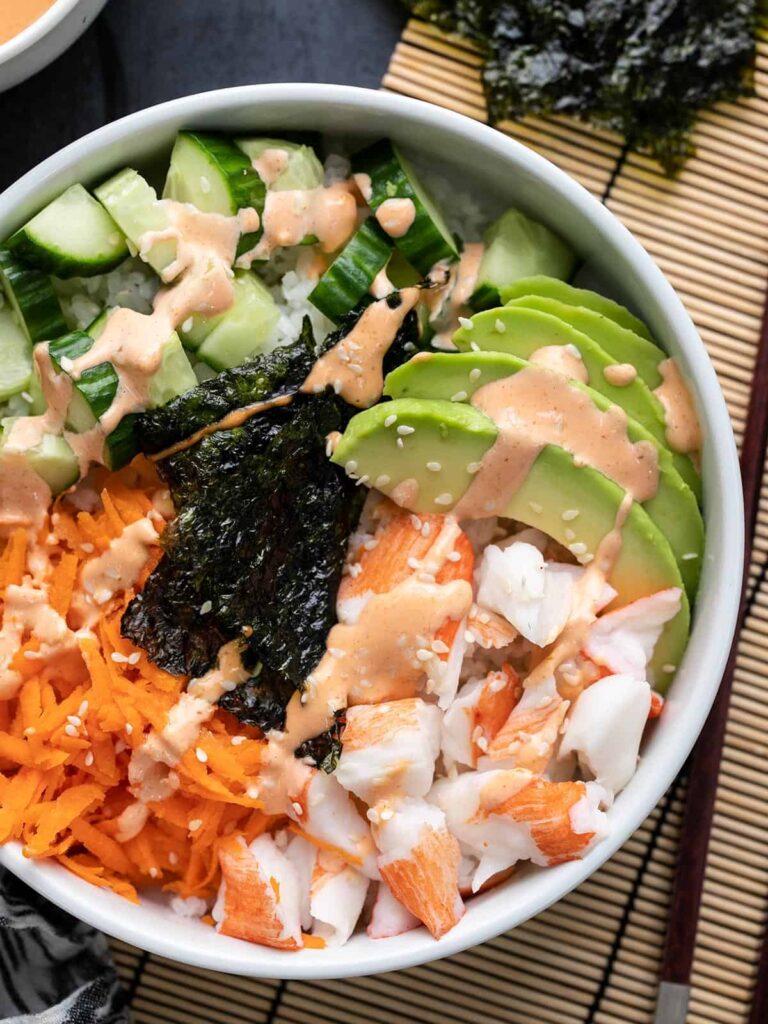

Vegetarian and Vegan Recipes
These vegan and vegetarian recipes should offer you a range of flavorful and nourishing options for both lunch and dinner. Enjoy!
1. Chickpea Curry: In a large pot, sauté diced onion, minced garlic, and grated ginger until fragrant. Add canned chickpeas, diced tomatoes, coconut milk, and your choice of spices (such as curry powder, cumin, and turmeric). Simmer for 15-20 minutes until the flavors meld together. Serve over cooked rice or with naan bread.
2. Roasted Vegetable Buddha Bowl: Toss a mix of your favorite vegetables (such as sweet potatoes, Brussels sprouts, and cauliflower) with olive oil, salt, and pepper. Roast in the oven at 400°F (200°C) until tender and slightly caramelized. Serve over cooked quinoa or brown rice, and drizzle with tahini sauce.
3. Lentil and Vegetable Soup: In a large pot, sauté diced onions, carrots, and celery until softened. Add red lentils, vegetable broth, diced tomatoes, and your favorite herbs (such as thyme and rosemary). Simmer until the lentils are tender. Serve with crusty bread on the side.
4. Eggplant and Lentil Moussaka: Slice eggplants and brush them with olive oil. Roast in the oven until tender. In a separate pan, sauté diced onions and garlic. Add cooked lentils, diced tomatoes, tomato paste, and your favorite herbs (such as oregano and thyme). Layer the roasted eggplant slices with the lentil mixture in a baking dish. Top with a vegan bechamel sauce made from cashews, almond milk, nutritional yeast, and garlic powder. Bake until bubbly and golden.
5. Hummus and Veggie Wrap: Spread a generous amount of hummus on a whole wheat tortilla. Layer with sliced cucumbers, shredded carrots, baby spinach, and roasted red peppers. Roll up the tortilla into a wrap and enjoy a delicious and satisfying lunch.
6. Vegan Sushi Rolls: Prepare sushi rice according to package instructions and let it cool. Spread a sheet of nori on a bamboo sushi rolling mat. Add a layer of sushi rice and your favorite fillings such as avocado, cucumber, and marinated tofu strips. Roll the sushi tightly and slice into bite-sized pieces. Serve with soy sauce, pickled ginger, and wasabi.
7. Vegan Chickpea and Vegetable Stir-Fry: In a large skillet, stir-fry diced bell peppers, snap peas, carrots, and broccoli florets until tender-crisp. Add cooked or canned chickpeas and toss with a sauce made from soy sauce, sesame oil, agave syrup (or your preferred sweetener), and a splash of rice vinegar. Serve over brown rice or quinoa.
8. Vegan Thai Green Curry: In a pot, simmer diced tofu, sliced bell peppers, sliced zucchini, and bamboo shoots in a Thai green curry sauce made from coconut milk, green curry paste, soy sauce, and lime juice. Serve the curry over jasmine rice and garnish with fresh cilantro and sliced red chili for added heat.
9. Vegan Butternut Squash Risotto: In a large pot, sauté diced onions in olive oil until translucent. Add arborio rice and stir to coat with the oil. Pour in vegetable broth a little at a time, stirring constantly until the rice is creamy and cooked through. Roast butternut squash cubes until tender and add them to the risotto along with chopped fresh sage. Season with salt, pepper, and vegan butter for added richness.
10. Vegan Stuffed Peppers: Cut the tops off bell peppers and remove the seeds. In a bowl, mix together cooked quinoa, black beans, diced tomatoes, corn kernels, diced onions, and minced garlic. Stuff the mixture into the bell peppers and bake in the oven until the peppers are tender.
11. Vegan Caesar Salad: Toss together chopped romaine lettuce, croutons, and vegan Caesar dressing. For the dressing, blend together soaked cashews, lemon juice, Dijon mustard, capers, garlic, nutritional yeast, and a splash of water until creamy. Top the salad with vegan parmesan and serve.
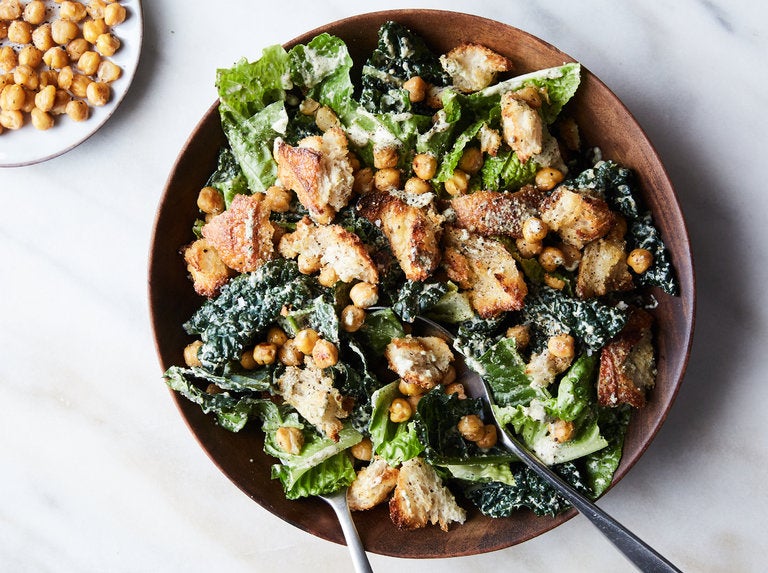
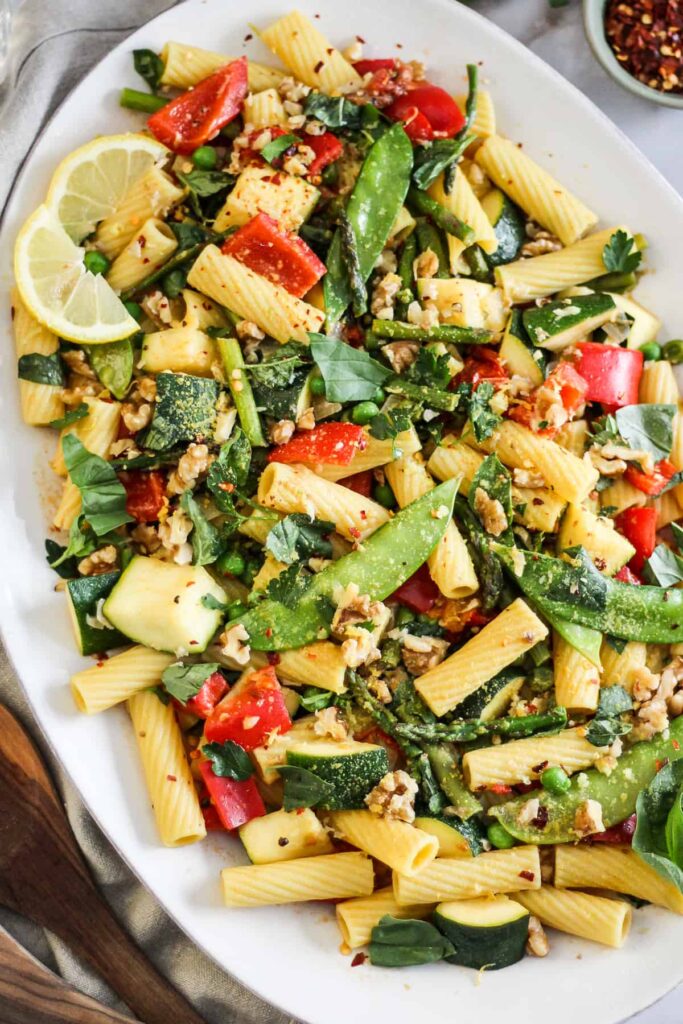
Dietary Restrictions
Feel free to customize these recipes to your liking and experiment with different flavors and ingredients. The key is to find recipes that are simple, nutritious, and enjoyable to eat. Remember, meal prep should make your life easier, so don’t be afraid to get creative and have fun in the kitchen.
1. Gluten-Free Burrito Bowl: Substitute regular tortillas with lettuce wraps or gluten-free tortillas. Build your burrito bowl with cooked rice, black beans, grilled chicken or tofu, sautéed bell peppers and onions, diced tomatoes, and a dollop of guacamole.
2. Lactose-Free Pasta Primavera: Use lactose-free milk or a plant-based milk alternative (such as almond or oat milk) to make a creamy pasta sauce. Sauté your choice of vegetables (such as zucchini, cherry tomatoes, and asparagus) in olive oil, and toss with cooked pasta and the lactose-free sauce.
3. Dairy-Free Creamy Tomato Basil Pasta: Cook gluten-free pasta according to package instructions. In a blender, combine soaked cashews, canned diced tomatoes, fresh basil leaves, garlic, nutritional yeast, and vegetable broth. Blend until smooth and creamy. Toss the sauce with the cooked pasta and serve with a sprinkle of dairy-free parmesan.
4. Paleo Zucchini Noodles with Pesto: Use a spiralizer to create zucchini noodles. In a food processor, blend together fresh basil, pine nuts (or almonds), garlic, lemon juice, and olive oil until you have a smooth pesto sauce. Toss the zucchini noodles with the pesto and top with cherry tomatoes and dairy-free “parmesan” made from ground nuts.
5. Low-Carb Turkey Lettuce Wraps: In a skillet, sauté ground turkey with diced onions, minced garlic, grated ginger, and water chestnuts. Season with gluten-free soy sauce, sesame oil, and a touch of maple syrup. Spoon the turkey mixture onto large lettuce leaves, roll them up, and enjoy these flavorful and low-carb wraps.
6. Sugar-Free Baked Apples: Core and slice apples and place them in a baking dish. Sprinkle with cinnamon and a small amount of stevia or a sugar substitute of your choice. Bake until the apples are tender and slightly caramelized.
7. Keto Cauliflower Crust Pizza: In a food processor, pulse cauliflower florets until they resemble fine crumbs. Microwave the cauliflower crumbs and then squeeze out any excess moisture using a clean kitchen towel. Mix the cauliflower with almond flour, ground flaxseed, vegan cheese, and your preferred keto-friendly seasonings. Press the mixture into a crust shape on a baking sheet and bake until crispy. Top with sugar-free tomato sauce, more vegan cheese, and keto-friendly toppings of your choice.
8. Nut-Free Vegan Pesto: In a food processor, blend together fresh basil, sunflower seeds, garlic, nutritional yeast, and olive oil. Season with salt and pepper to taste. This pesto is a delicious alternative for those with nut allergies.
9. Grain-Free Chicken Broccoli Casserole: In a casserole dish, layer cooked and shredded chicken, steamed broccoli florets, and a creamy sauce made from coconut milk, tapioca starch, garlic powder, and onion powder. Top with grain-free breadcrumbs made from almond flour and bake until golden and bubbly.
10. Egg-Free Banana Pancakes: Mash ripe bananas in a bowl and mix in coconut flour, baking powder, and a pinch of cinnamon. Cook the pancake batter on a skillet with coconut oil until golden brown on both sides. Serve with fresh fruit and a drizzle of pure maple syrup.
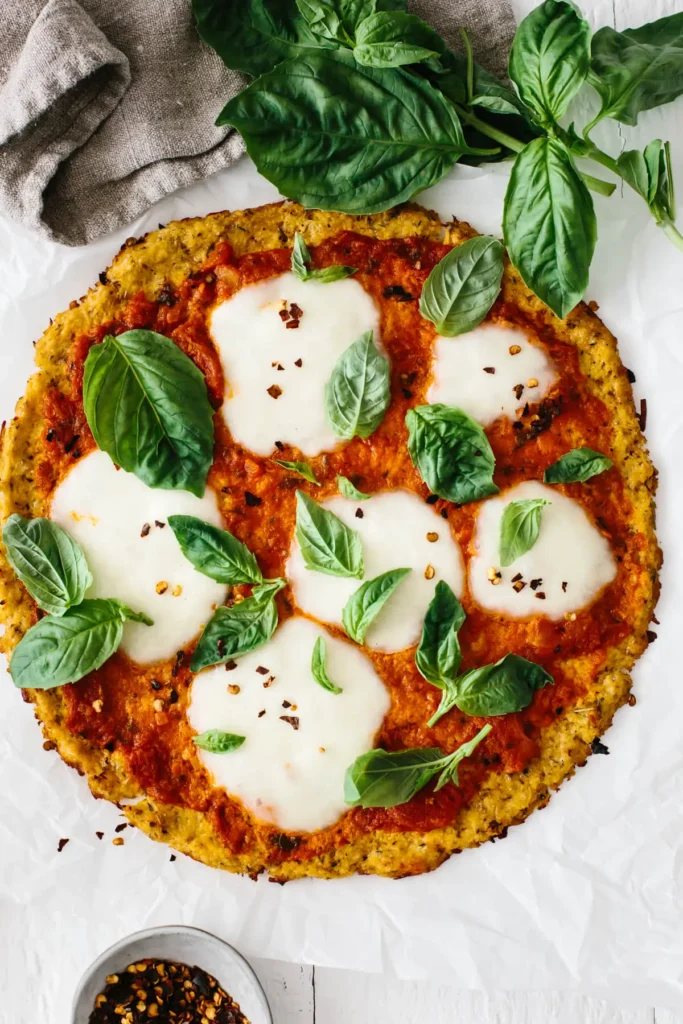
Conclusion
In short, student meal prep simplifies college life with easy and budget-friendly recipes. It saves time, money, and promotes healthier eating habits. By planning ahead and being creative in the kitchen, students can enjoy nutritious meals, focus on studies, and foster a sense of community with like-minded peers. Embracing this approach empowers students to take control of their culinary choices and leads to a more balanced and enjoyable college experience.




Hi there! Just wanted to let you know how much I enjoyed reading this post. Your approach to the subject was unique and informative. It’s clear that you put a lot of effort into your writing. Keep up the great work, and I can’t wait to see what else you have in store.